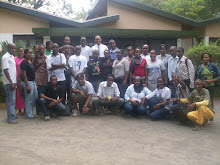An invasive weed threatens pasture land and the ecosystem of the Maasai Mara. The International Union of for conservation of Nature (ICUN) has issued an alert on the weed commonly known as Santa Maria feverfew.
The Serengeti-Maasai Mara ecosystem in Africa which host the largest wildlife migration known to man, is under attack from a noxious weed” the ICUN alert.
The Serengeti-Maasai Mara is home of African’s largest herbivore population. At the start of annual rainy season, millions of wildebeest, gazelles, zebras and giraffes leave the Tanzanian Savannah for pasture in the plains of Kenya. In December, the animals leave Kenya to Tanzania creating a tourist spectacle, all these at risk.
Feverfew is on of the world’s 10 most dangerous weeds and can grow up to two meters tall. Until now it is only seen on tracks crossing the wildlife reserve and on the shore of the Mara river. "It is very hard to say how long it will take for the invasion to spread to whole park, because it depends on many factors, in particular climatic conditions", says Damian Thobias invasive coordinator at Serengeti development research and conservation centre (SEDEREC).
“But the example of Uganda shows that it may be very quick. The plant was first sported three years ago and it is now all over the country.It can grow from seed to maturity in four to six weeks and can produce 10,000 to 25,000 seeds per season”.
Unlike other countries like Central American habitat, there are no predatory insects to check the spread.
Feverfew has been on the red list of invasive species in Australia and India for decades. Its pollen is a skin irritant and cause respiratory problems.The weed’s first landfall in Africa was in Ethiopia in the early 1980s.The most widespread, through unconfirmed, explanations in the conjunction is that it was imported with food aid to combat famine.
Unless action is taken immediately, it is not unrealistic to expect adrastic reduction in wildlife population in the long term” said George Goshashi of SEDEREC.
The Central for agricultural Bioscience International (Cabi) has drawn up a plan to eradicate the species in the conjunction with Tanzania and Kenya wildlife service.
“Ideally we should mount a biological response for example by introducing an insects predator- but that is extremely expensive. Another solution is weedkiller, but that wouldn’t bee too popular with donors”Mr Damian admits.
Feverfew seeds can lie dominant in the soil for several years so the decision on whether to implement the plains lies with Tanzania and Kenya authorities
Written by;
Bright Sospeter-YET 2011
Thursday, April 14, 2011
Subscribe to:
Post Comments (Atom)


No comments:
Post a Comment